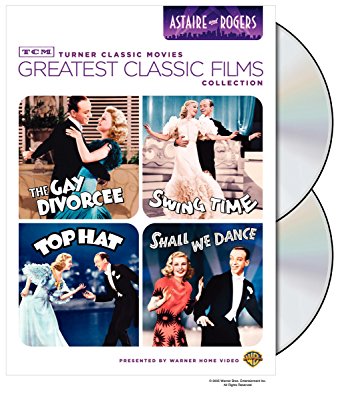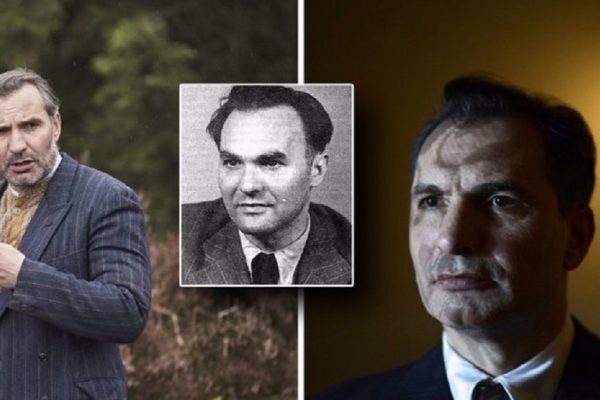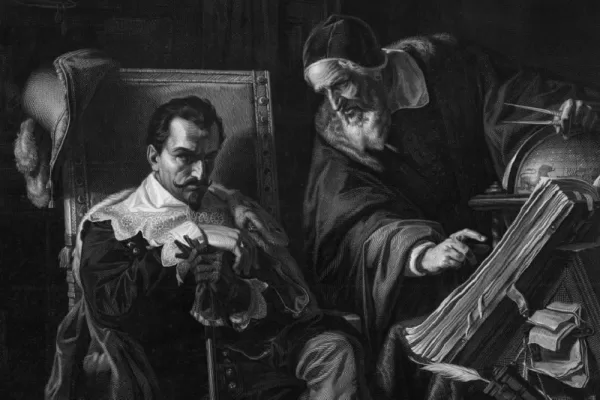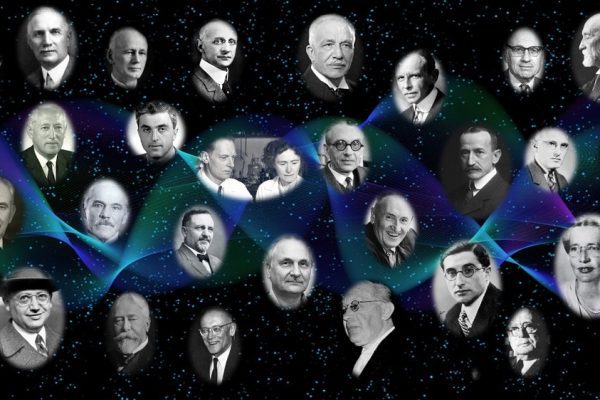Fred Astaire (orig. Austerlitz) (1899- 1987), was born in Omaha, Nebraska. He was an American dancer, choreographer, singer, musician and actor, and is regarded by many as the greatest popular-music dancer of all time.
His stage and subsequent film and television careers spanned a total of 76 years, during which he made 31 musical films, several award-winning television specials, and issued numerous recordings. He was named the fifth Greatest Male Star of Old Hollywood by the American Film Institute. He is best known as the dancing partner and on-screen romantic interest of Ginger Rogers, with whom he co-starred in a series of ten Hollywood musicals which transformed the genre.
Astaire studied dancing from the age of four. In 1906 he formed an act, with his sister Adele, that became a popular vaudeville attraction.
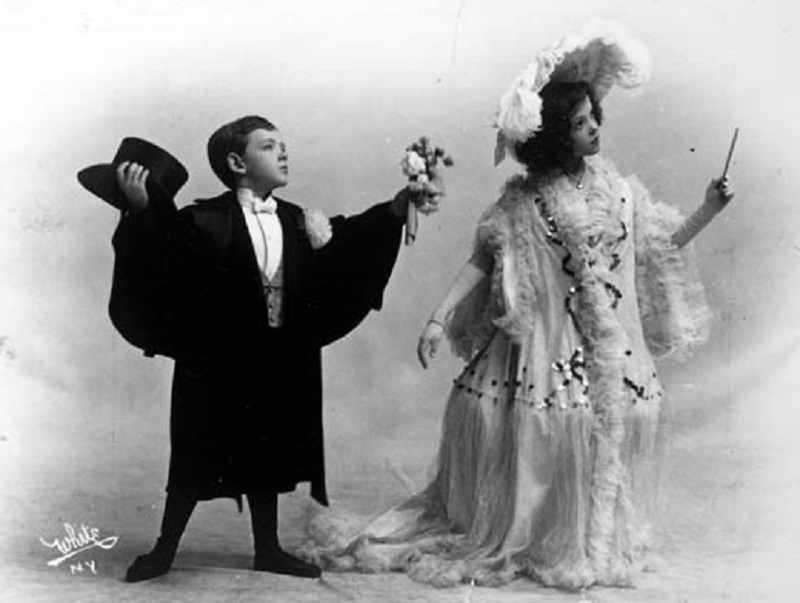
Fred and his sister Adele in 1906.
The two appeared briefly in the Mary Pickford film Fanchon the Cricket (1915) and made their Broadway debut in Over the Top (1917). They achieved international fame with stage hits that included For Goodness Sake (1922), Funny Face (1927), and The Band Wagon (1931).
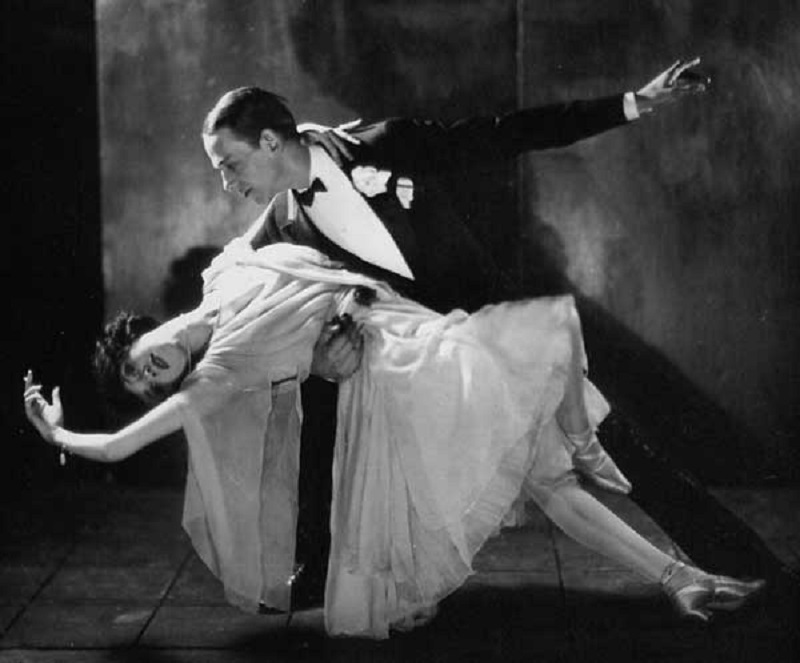
Fred and Adele Astaire in 1921.
When Adele retired after marrying Lord Charles Cavendish in 1932, Astaire made a screen test, receiving the verdict from executives, “Can’t act, can’t sing. Balding. Can dance a little.”
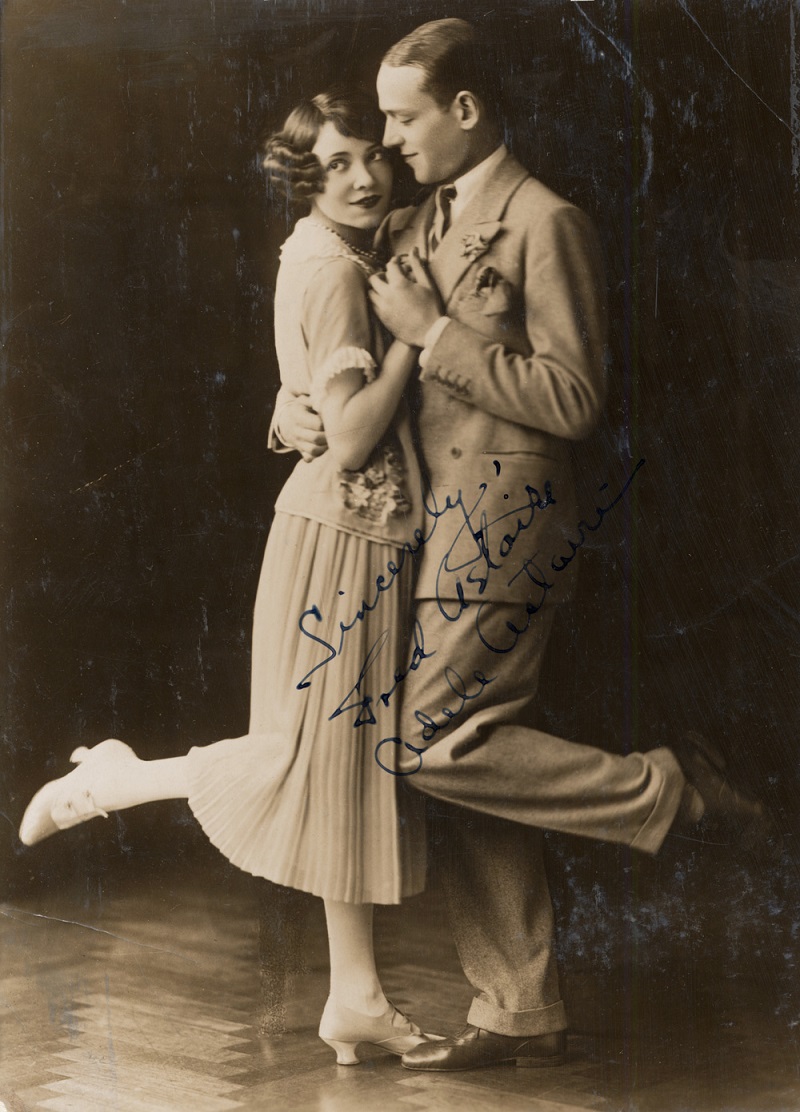
Fred and Adele Astaire, 1929. In many respects, it seems like the critics really considered Adele to be the true star of the duo, not Fred.
He was nevertheless cast as a featured dancer in the Metro-Goldwyn-Mayer production Dancing Lady (1933), which starred Joan Crawford, Clark Gable, and the Three Stooges.
Also in 1933 Astaire was paired with Ginger Rogers in the RKO Radio Pictures production, Flying Down to Rio.
They were a sensation, stealing the picture from stars Delores del Rio and Gene Raymond, and public demand compelled RKO to feature the pair in a classic series of starring vehicles throughout the 1930s, with The Gay Divorcee (1934), Top Hat (1935), and Swing Time (1936) often cited as the best of the lot.
Although Astaire worked well with several leading ladies throughout his career, his partnership with Rogers had a special chemistry. Their respective elegance (Astaire) and earthiness (Rogers) rubbed off on one another, and it has often been said that he gave her class and she gave him sex appeal.
Their dance routines, often in the midst of sumptuous Art Deco settings, were intricate tap or graceful ballroom numbers that served as sophisticated statements of romantic love. Only once—in Carefree (1938)—did Astaire and Rogers share an on-screen kiss, and then only in a dream sequence.
Astaire’s immensely popular dancing style appeared relaxed, light, effortless, and largely improvised. In reality, he was a hard-working perfectionist who tirelessly rehearsed routines for hours on end. Working in collaboration with legendary choreographer Hermes Pan for his films with Rogers, Astaire eschewed the then-popular Busby Berkeley approach to filmed musicals and its emphasis on special effects, surreal settings, and chorus girls in ever-changing kaleidoscope patterns. Instead, Astaire revolutionized the movie musical by simplifying it: solo dancers or couples were shot in full-figure, and dances were filmed with a minimum of edits and camera angles. He is regarded as a pioneer in the serious presentation of dance on film.
After the last RKO Astaire-Rogers film in 1939, Astaire appeared with various partners such as Eleanor Powell, Rita Hayworth (whom Astaire cited as his favorite on-screen partner), and Lucille Bremer. He retired temporarily in 1946 but returned to the screen in 1948 and appeared in a series of Technicolor musicals for MGM that, next to his films with Rogers, constitute his most highly regarded body of work.
Several of Astaire’s most famous dance routines appear in these films, such as the slow-motion dance in Easter Parade (1948), the dance with empty shoes in The Barkleys of Broadway (1949, his only reunion with Ginger Rogers), the ceiling dance and the duet with a hat rack in Royal Wedding (1951), and the dance on air in The Belle of New York (1952).
The best of Astaire’s films during this period was The Band Wagon (1953), often cited as one of the greatest of film musicals, and which featured Astaire’s memorable duet with Cyd Charisse to the song “Dancing in the Dark.”
Astaire’s run of classic MGM musicals ended with Silk Stockings (1957), after which his screen appearances were mostly in non dancing character roles. He continued to dance with new partner Barrie Chase for several Emmy Award-winning television specials throughout the 1950s and ’60s, and he danced again onscreen in Finian’s Rainbow (1968) and for a few steps with Gene Kelly in That’s Entertainment, Part II (1976).
In addition to Astaire’s immeasurable contributions to the art of dance, he was also noted for his quintessentially American vocal style. Although possessing a rather thin-toned tenor voice, Astaire received much praise from jazz critics for his innate sense of swing and his conversational way with a song.
Several compilations have been issued of Astaire songs from film soundtracks, but his best vocal recordings were those he undertook in the early 1950s with jazz combos led by pianist Oscar Peterson. They have been released under several titles on various LP and CD collections over the years.
(Kytka’s addition: One of my personal favorites is when he danced with Gene Kelley in Ziegfeld Follies, 1946.)
Astaire’s most notable dramatic roles were in On the Beach (1959); The Pleasure of His Company (1962); The Towering Inferno (1974), for which he received an Oscar nomination for best supporting actor; and Ghost Story (1981), his final film.
He was awarded an honorary Academy Award for his contributions to film in 1950, and he received a Life Achievement Award from the American Film Institute in 1981. Despite the many accolades for his unquestionable greatness, Astaire remained as modest and elegant as the characters he portrayed. As he said in his autobiography, Steps in Time (1959), “I have no desire to prove anything by it. I just dance.”
Fred Astaire’s Czech Ancestry
- Paternal Grandfather: Stefan Austerlitz (b. 1833), b. Prague, Bohemia.
- Paternal Grandmother: Lucie Heller (b. 1841), Postoloprty, Bohemia, Louny Dist.
- Fred’s Genealogy at geni.com.
Fred Astaire died from pneumonia on June 22, 1987, at the age of 88.
One last request of his was to thank his fans for their years of support.
From Kytka: If you are as much a fan as we are, we recommend you get the following two DVDs (which are very reasonable priced) for your collection…
TCM Greatest Classic Film Collection: Astaire & Rogers (The Gay Divorcee / Top Hat / Swing Time / Shall We Dance). Get it here.
TCM Greatest Classic Film Collection: Astaire & Rogers Volume Two (Roberta / Follow the Fleet / Flying Down to Rio / The Story of Vernon and Irene Castle). Get it here.
Kytka’s Bit of Trivia: Did you know that Prague’s famous Dancing House (Czech: Tančící dům), or Fred and Ginger, (after the famous dancers Fred Astaire and Ginger Rogers – the house resembles a pair of dancers) is the nickname given to the Nationale-Nederlanden building on the Rašínovo nábřeží (Rašín Embankment) in Prague, Czech Republic?

Guest Post Author

Mila Rechcígl
Miloslav Rechcígl, Jr. is one of the founders and past Presidents of many years of the Czechoslovak Society of Arts and Sciences (SVU), an international professional organization based in Washington, DC. He is a native of Mladá Boleslav, Czechoslovakia, who has lived in the US since 1950.
Read his entire profile here. Discover Mila’s many books on Amazon.
Thank you for your support – We appreciate you more than you know!
We know that you could spend hours, days, weeks and months finding some of this information yourselves – but at this website, we curate the best of what we find for you and place it easily and conveniently into one place. Please take a moment today to recognize our efforts and make a donation towards the operational costs of this site – your support keeps the site alive and keeps us searching for the best of our heritage to bring to you.
Remember, we rely solely on your donations to keep the project going.
Thank you in advance!
If you have not already subscribed to get TresBohemes.com delivered to your inbox, please use the form below now so you never miss another post.

